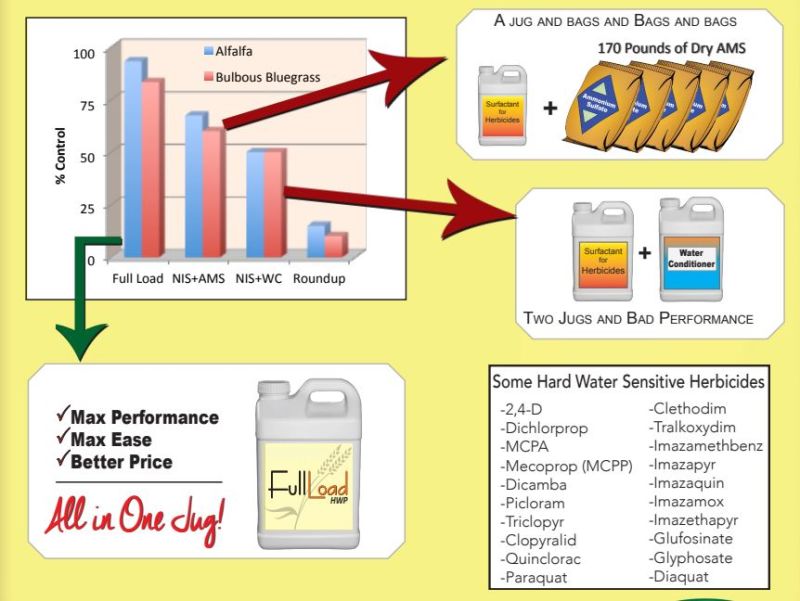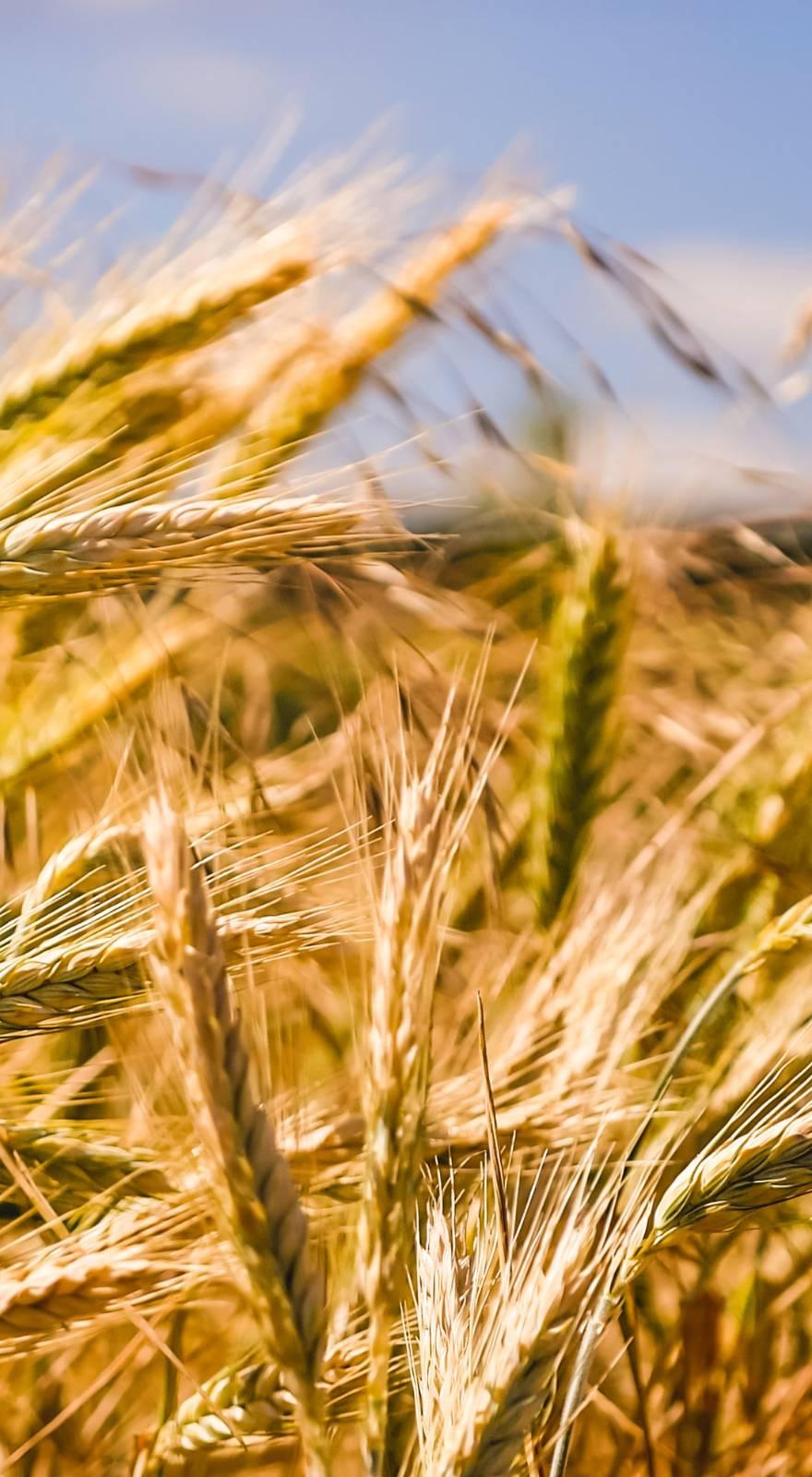Knowde Enhanced TDS
Identification & Functionality
- Agrochemical Functions
- Technologies
- Product Families
- Active Ingredients
Propietary blend of surfactants and hydrogensulfate 64.00% Constituents Ineffective as Spray Adjuvants 36.00% TOTAL 100.00%
Features & Benefits
- Agrochemicals Features
- Features
- Fully Loaded Surfactant Blend
- Perfect Blend for Most Post Herbicides
- Protects Herbicides from Hard Water
- Increase Solubility
- Activates Negatively Charged Herbicides
- Does Not Increase Dicamba Volatility
- Contains Glyphosate Favorite Surfactant
- Contains Load Out’s Unique Hard Water
- Scavenger System
- Replaces AMS
- Replaces NON-AMS Water Conditioners
- Some Hard Water Sensitive Herbicides
- 2,4D
- Dichlorprop
- MCPA
- Mecoprop (MCPP)
- Dicamba
- Picloram
- Triclopyr
- Clopyralid
- Quinclorac
- Paraquat
- Clethodim
- Tralkoxydim
- Imazamethbenz
- Imazapyr
- Imazaquin
- Imazamox
- Imazethapyr
- Glufosinate
- Glyphosate
- Diaquat
Applications & Uses
- Markets
- Applications
- Applicable Crop
- Application Technique
- Directions For Use
USE THIS PRODUCT ONLY AS SPECIFIED ON LABEL. Full Load HWP™ adjuvant should be added to the spray water with adequate agitation prior to the addition of the glyphosate herbicide. Fill the tank half full, add Full Load HWP™ finish filling then add a glyphosate herbicide. This should give time for Full Load HWP™ to react with the hard water cations. Full Load HWP™ adjuvant is intended to tie up cations, condition the spray water and enhance the penetration of the cuticle for glyphosate. Full Load HWP™ contains surfactants will replace surfactant only products. Full Load HWP™ will work with other anionic herbicides. USE RATES: Are dependent upon water hardness and the need for surfactant. Most water will need 0.25% v/v (1 qt/100 gals. spray solution) Hard water use up to 0.5% (2 qts/100 gals. spray solution) Extreme hard water use up to 1.25% v/v (5 qts/100 gals. spray solution). NOT FOR AQUATIC USE.The concentration of Full Load HWP™ in the spray tank cannot exceed 25% of the total amount of formulated herbicides(s) and 10% of the total amount of formulated insecticide(s) and/or fungicide(s).
- Full Load; Label Situation With Dicamba And 2,4-D Tolerant Crops
Full Load was designed and built as an AMS replacement adjuvant to work with glyphosate and all herbicides formulated as salts, including Dicamba and 2,4-D. Full Load does not increase the volatility of dicamba or 2,4-D.
- All tank mixtures of XtendiMAX + glyphosate based herbicide also require an approved DRA (Drift Reduction Agent). Full Load is an excellent AMS replacement adjuvant for tank mixtures using XtendiMAX plus PowerMAX or XtendiMAX plus any glyphosate herbicide that requires an approved DRA.
- Full Load can be used with XtendiMAX.
- Full Load has not been tested with Engenia.
- Full Load has not been tested with Enlist Duo.
Properties
- Physical Form
Technical Details & Test Data
- Technical Analysis

Safety & Health
- Safety
- HAZARD STATEMENT: HARMFUL IF SWALLOWED. MAY CAUSE AN ALLERGIC SKIN REACTION. CAUSES SERIOUS EYE IRRITATION. MAY CAUSE RESPIRATORY IRRITATION. VERY TOXIC TO AQUATIC LIFE. Have the product container label with you when calling a poison control center or doctor, or going for treatment. You may also contact 1-800-222-1222 for emergency medical tratment information.
- PRECAUTIONARY STATEMENT Avoid breathing mist/ vapors/ spray. Wash thoroughly with soap and water after handling. Do not eat, drink or smoke after using this product. Use only outdoors or in a well-ventilated area. Take off contaminated clothing and wash it before reuse. Specific treatment see First Aid section on this label or Safety Data Sheet. Store locked up. Dispose of contents/ container according to instructions in the Storage and Disposal section on the label.
- PERSONAL PROTECTIVE EQUIPMENT Wear protective gloves / protective clothing / eye protection/face protection.
- ENVIRONMENTAL HAZARDS Do not contaminate water by cleaning of equipment or disposal of wastes. Use this product only as specified on label.
- PHYSICAL OR CHEMICAL HAZARDS Wash LOAD OUT-CA spillage off thoroughly. The same precautions should be observed in equipment stored after use. If LOAD OUT-CA concentrate contacts clothing, flush with water
First Aid
- IF SWALLOWED Wash out mouth thoroughly with water. Get medical attention. Contact a Poison Control Center. Do not induce vomiting
- IF ON SKIN Skin Immediately flush with plenty of water while removing contaminated clothing. As soon as soap is available, wash thoroughly with soap and water. Wash clothing before reuse.
- IF INHALED None normally needed. Remove to fresh air if breathing is difficult. Give oxygen and call a physician.
- IF IN EYES Immediately flush with plenty of water for at least 15 minutes. Get medical attention.
Storage & Handling
- Storage
DO NOT CONTAMINATE WATER, FOOD OF FEED BY STORAGE OR DISPOSAL.
Do not store at temperatures above 140°F. DISPOSAL: Triple rinse container and pour rinsate into spray tank. Do not reuse container. Recycling decontami-nated containers is the best option of container disposal. The Agricultural Container Recycling Council (ACRC) operates the national recycling program. To contact your state and local ACRC recycler visit www.acrecycle.org. Dispose of contents/container in accordance with local/national regulations.

